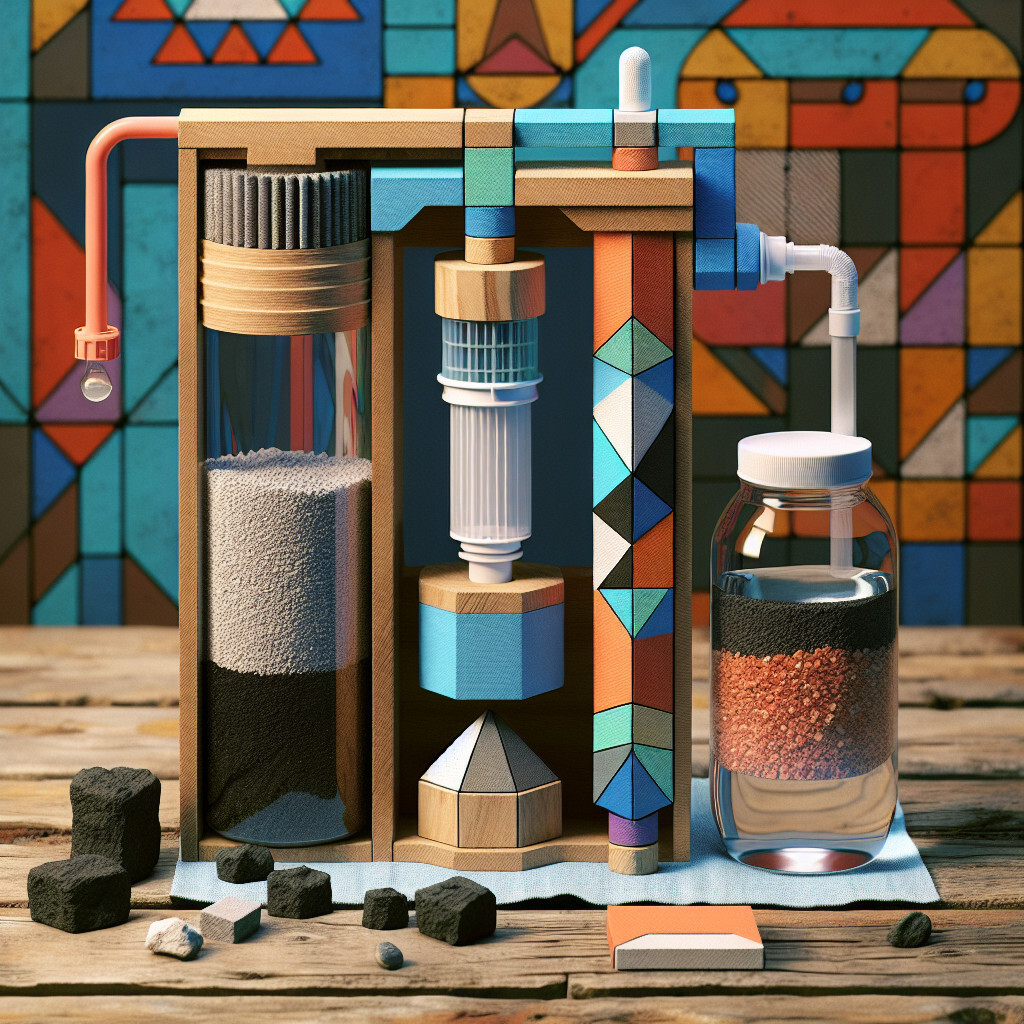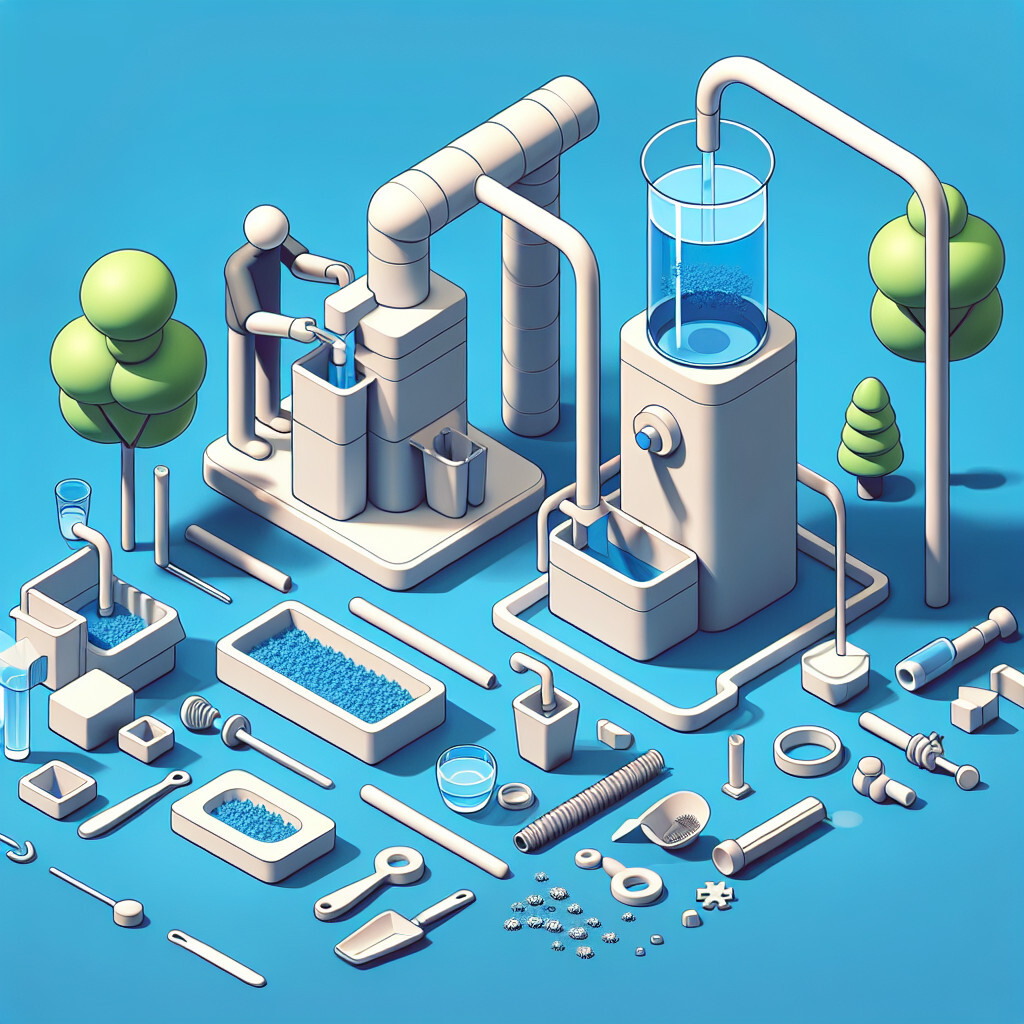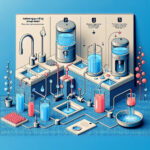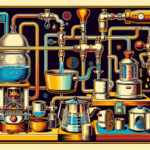-
Table of Contents
“Turning Drops into Pure Sips: Your Guide to DIY Water Filtration”
Introduction

A DIY water filtration system is a simple, cost-effective method to purify water, making it safe for drinking and cooking. This guide will provide step-by-step instructions on how to create your own water filtration system at home using readily available materials such as sand, gravel, and activated charcoal. This system works by removing impurities and contaminants through various stages of filtration, resulting in clean, potable water. It’s an essential skill for survival situations, outdoor adventures, or in regions where clean water is scarce.
Step-by-Step Guide to Building Your Own Water Filtration System
Water is an essential element of life, and having access to clean, safe drinking water is a fundamental human right. However, in certain situations, such as during a natural disaster or while camping in the wilderness, access to clean water may be limited. In such cases, a do-it-yourself (DIY) water filtration system can be a lifesaver. This article provides a step-by-step guide on how to build your own water filtration system.
To begin with, gather the necessary materials. You will need a plastic bottle, a knife or pair of scissors, a coffee filter or cotton balls, activated charcoal, sand, and gravel. These materials are readily available and can be found in most homes or purchased at a local store.
Start by cutting the bottom off the plastic bottle using the knife or scissors. Be careful not to cut yourself in the process. This bottle will serve as the main body of your filtration system. Next, place the coffee filter or cotton balls at the neck of the bottle. This will act as the first layer of filtration, trapping larger particles and preventing them from passing through.
The next step involves adding a layer of activated charcoal to the bottle. Activated charcoal is excellent at removing toxins and impurities from the water. Pour about two to three inches of activated charcoal into the bottle, on top of the coffee filter or cotton balls.
Following the activated charcoal, add a layer of sand. The sand serves as a secondary filter, catching any smaller particles that managed to pass through the charcoal. Pour about two to three inches of sand into the bottle, ensuring it forms a layer above the activated charcoal.
Finally, add a layer of gravel to the bottle. The gravel acts as the final filter, catching any remaining particles and helping to clear the water. Pour enough gravel into the bottle to fill it up to about an inch from the top.
Once your filtration system is assembled, it’s time to put it to the test. Pour some water into the top of the bottle and let it filter through the layers of gravel, sand, activated charcoal, and finally, the coffee filter or cotton balls. Collect the filtered water in a clean container.
It’s important to note that while this DIY water filtration system can remove many impurities and particles from the water, it may not remove all harmful bacteria or viruses. Therefore, it’s recommended to boil the filtered water before drinking, especially if the source of the water is questionable.
In conclusion, building your own water filtration system is a straightforward process that requires minimal materials and effort. It can be a valuable skill to have, especially in emergency situations where access to clean water is limited. However, always remember to boil the filtered water before drinking to ensure it’s safe for consumption. With this DIY water filtration system, you can take a proactive step towards ensuring your access to clean, safe drinking water.
DIY Water Filtration: A Comprehensive Tutorial
Water is an essential element of life, and having access to clean, safe drinking water is a fundamental human right. However, in certain situations, such as during camping trips or in emergency scenarios, access to clean water may be limited. In such cases, a do-it-yourself (DIY) water filtration system can be a lifesaver. This article provides a comprehensive tutorial on how to make a DIY water filtration system.
To begin with, it’s important to understand the basic principle behind water filtration. Essentially, it involves passing water through a series of barriers that remove impurities such as dirt, bacteria, and chemicals. The goal is to produce water that is safe for consumption.
Now, let’s delve into the process of creating a DIY water filtration system. The materials required are simple and readily available. You will need a plastic bottle, a coffee filter or cotton balls, activated charcoal, sand, and gravel.
Firstly, cut the bottom off the plastic bottle. This will serve as the top of your filtration system. Next, place the coffee filter or cotton balls at the neck of the bottle. This acts as the first barrier, filtering out larger particles from the water.
Following this, add a layer of activated charcoal. Activated charcoal is excellent at removing toxins and chemicals from water, making it a crucial component of your filtration system. Ensure that the layer is thick enough to effectively filter the water but not so thick that it prevents the water from passing through.
Next, add a layer of sand. The sand serves as a secondary filter, catching any smaller particles that may have passed through the charcoal. Again, ensure that the layer is thick enough to be effective but not so thick that it hinders the flow of water.
Finally, add a layer of gravel. The gravel acts as the final barrier, catching any remaining particles before the water drips out of the filter.
Once your filtration system is assembled, pour the water to be filtered into the top of the system. The water will pass through each layer, becoming cleaner as it goes. The filtered water will collect at the bottom of the bottle, ready for consumption.
However, it’s important to note that while this DIY water filtration system is effective at removing many impurities, it may not remove all potential contaminants, especially microscopic ones like viruses. Therefore, it’s recommended to boil the filtered water before drinking, if possible.
In conclusion, a DIY water filtration system can be a valuable tool in situations where access to clean water is limited. By understanding the basic principles of water filtration and gathering a few simple materials, you can create your own water filtration system. Remember, while this system can significantly improve the quality of water, it’s always best to ensure the water is boiled before consumption to eliminate any remaining contaminants. This DIY project not only equips you with a practical skill but also underscores the importance of clean, safe drinking water.
Creating a Homemade Water Filter: A Practical Approach
Water is an essential element of life, and its purity is of utmost importance. However, in certain circumstances, access to clean water may be limited. In such cases, a do-it-yourself (DIY) water filtration system can be a lifesaver. This article will guide you through the process of creating a homemade water filter using readily available materials.
To begin with, it is important to understand the basic principle behind water filtration. Essentially, it involves passing water through a series of barriers that filter out impurities. The barriers can be made from various materials, each designed to remove a specific type of contaminant.
The first step in creating a DIY water filtration system is gathering the necessary materials. You will need a plastic bottle or a similar container, a cutting tool, gravel, sand, activated charcoal, a piece of cloth or coffee filter, and rubber bands. These materials are easily accessible and affordable, making this project feasible for anyone.
Once you have all the materials, start by cutting the bottom off the plastic bottle. This will serve as the top of your filter. Next, turn the bottle upside down and add a layer of activated charcoal. Activated charcoal is known for its ability to absorb toxins and impurities, making it a crucial component of your filter.
Following the charcoal, add a layer of sand. Sand acts as a fine filter, trapping smaller particles that the charcoal cannot catch. After the sand, add a layer of gravel. The gravel will catch larger particles and prevent the sand and charcoal from being washed away.
To hold everything in place and prevent the materials from mixing, place a piece of cloth or a coffee filter at the top of the gravel layer and secure it with a rubber band. This also serves as an additional barrier to filter out any remaining impurities.
Now, your DIY water filtration system is ready for use. Pour the water to be filtered into the top of the system and let it trickle down through the layers of gravel, sand, and charcoal. As the water passes through each layer, impurities are trapped, resulting in cleaner water at the bottom.
It is important to note that while this DIY water filtration system can remove many impurities, it is not capable of removing all types of contaminants. For instance, it cannot remove harmful bacteria or viruses. Therefore, it is recommended to boil the filtered water before consumption, especially if the source of the water is questionable.
In conclusion, creating a homemade water filter is a practical and cost-effective solution for obtaining clean water in situations where it may not be readily available. It is a simple process that requires minimal materials and effort. However, it is crucial to remember that while this DIY system can significantly improve the quality of water, it does not guarantee complete purification. Therefore, additional steps such as boiling should be taken to ensure the water is safe for consumption. This DIY project not only equips you with a valuable survival skill but also fosters an understanding of the importance of clean water and the process of water purification.
How to Construct a DIY Water Filtration System: A Detailed Guide
Water is an essential element of life, and its purity is of utmost importance. However, in certain circumstances, access to clean water may be limited. In such cases, a do-it-yourself (DIY) water filtration system can be a lifesaver. This article provides a detailed guide on how to construct a DIY water filtration system.
To begin with, it is important to gather all the necessary materials. These include a plastic bottle, gravel, sand, activated charcoal, a piece of cloth or coffee filter, and a rubber band. Each of these components plays a crucial role in the filtration process. The plastic bottle serves as the main body of the filtration system, while the gravel, sand, and activated charcoal act as filters to remove impurities from the water. The cloth or coffee filter is used to prevent the filtration materials from escaping the bottle, and the rubber band secures it in place.
Once the materials are ready, the first step is to cut the bottom off the plastic bottle. This will serve as the top of the filtration system where the dirty water will be poured in. Next, the cloth or coffee filter should be secured over the mouth of the bottle using the rubber band. This acts as a pre-filter to catch larger particles and prevent the filtration materials from escaping.
Following this, the bottle should be filled with the filtration materials. The first layer should be activated charcoal, which is effective in removing chemicals and improving the taste and odor of the water. The charcoal should fill about one-third of the bottle. On top of the charcoal, a layer of sand should be added. The sand acts as a finer filter, catching smaller particles that the charcoal cannot. This should also fill about one-third of the bottle. The final layer should be gravel, which will catch larger particles and prevent the sand from clogging. The gravel should fill the remaining third of the bottle.
After the filtration materials have been added, the DIY water filtration system is ready to use. Dirty water should be poured slowly into the top of the bottle, allowing it to trickle down through the layers of filtration materials. As the water passes through each layer, impurities are trapped, and clean water emerges from the bottom of the bottle.
It is important to note that while this DIY water filtration system can remove many impurities, it cannot remove all types of contaminants. For instance, it cannot remove viruses or bacteria. Therefore, it is recommended to boil the filtered water before drinking, especially if the source of the water is unknown or suspected to be contaminated.
In conclusion, constructing a DIY water filtration system is a relatively simple process that can be accomplished with readily available materials. It can be a valuable tool in situations where access to clean water is limited. However, it is crucial to remember that while this system can significantly improve the quality of water, it does not guarantee complete purification. Therefore, additional steps such as boiling may be necessary to ensure the water is safe for consumption.
Q&A
1. Question: What materials are needed to make a DIY water filtration system?
Answer: The materials needed include a plastic bottle or a similar container, gravel, sand, activated charcoal, a piece of cloth or coffee filter, and a rubber band or string.
2. Question: What are the steps to make a DIY water filtration system?
Answer: Cut the bottom off the plastic bottle. Place the cloth or coffee filter over the bottle opening and secure it with a rubber band. Add a layer of activated charcoal, followed by a layer of sand, and then a layer of gravel. Pour the water to be filtered into the top of the bottle and let it drip through the filtering materials into a clean container.
3. Question: How does a DIY water filtration system work?
Answer: The DIY water filtration system works by gravity. The water moves down through the layers of gravel, sand, and activated charcoal. Each layer removes different types of contaminants. The gravel removes large particles, the sand removes smaller particles, and the activated charcoal removes chemical impurities.
4. Question: How effective is a DIY water filtration system?
Answer: A DIY water filtration system can be quite effective at removing visible dirt and debris, and some chemical impurities. However, it may not remove all types of contaminants, especially microscopic organisms and heavy metals. It’s best used as a preliminary filtration method or in emergency situations, and not as a replacement for a proper, commercially-made water filtration system.
Conclusion
In conclusion, making a DIY water filtration system involves assembling a container with layers of gravel, sand, and activated charcoal to remove impurities from the water. The water is poured into the top of the system and allowed to filter through the layers to the bottom, where it is collected for use. This system can be effective for removing large particulates and some chemicals, but it may not remove all potential contaminants, so it should not be relied upon for purifying heavily contaminated water. Regular maintenance and replacement of the filtration materials is also necessary to ensure the system continues to function effectively.






